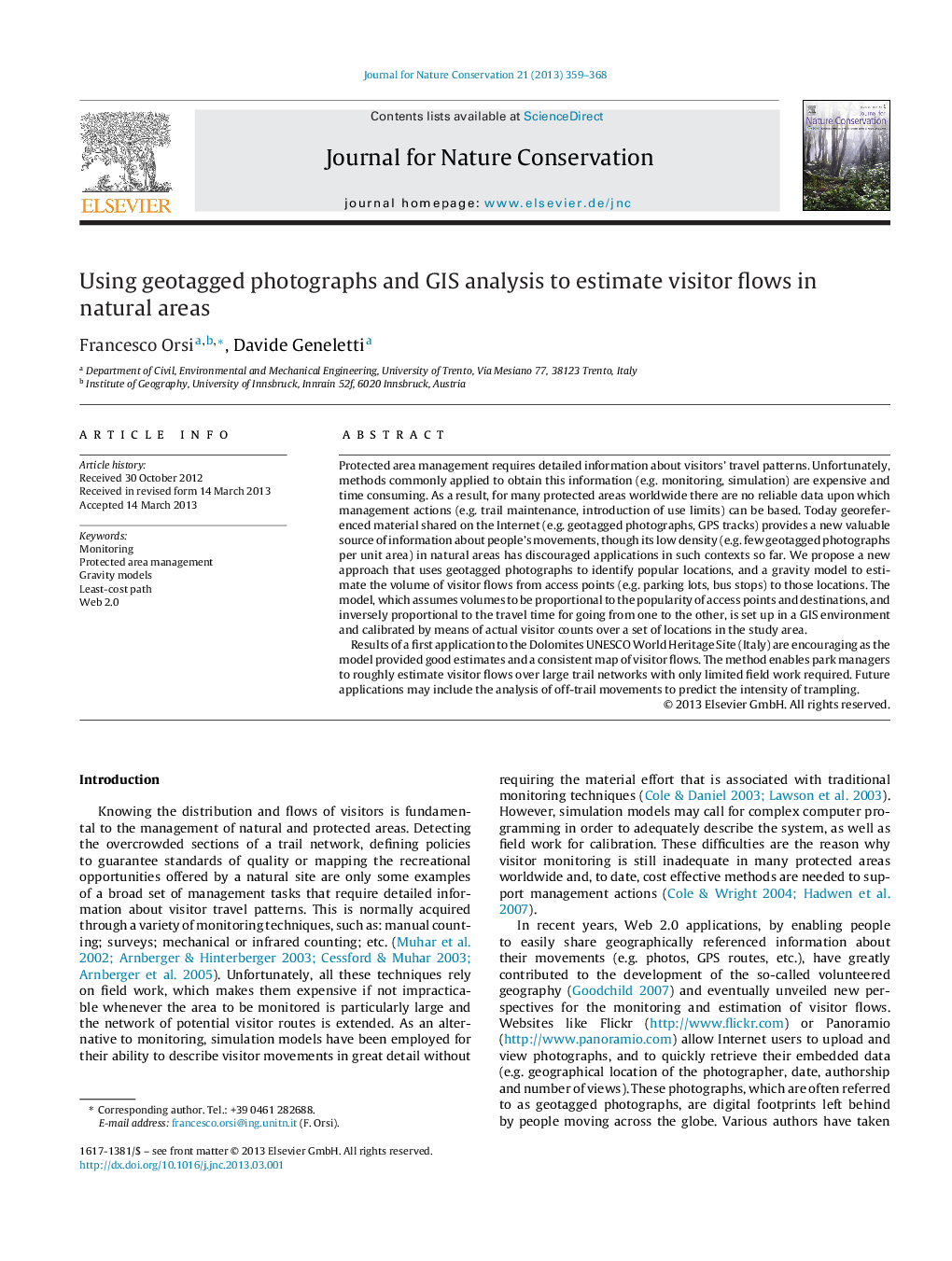| Article ID | Journal | Published Year | Pages | File Type |
|---|---|---|---|---|
| 4399889 | Journal for Nature Conservation | 2013 | 10 Pages |
Protected area management requires detailed information about visitors’ travel patterns. Unfortunately, methods commonly applied to obtain this information (e.g. monitoring, simulation) are expensive and time consuming. As a result, for many protected areas worldwide there are no reliable data upon which management actions (e.g. trail maintenance, introduction of use limits) can be based. Today georeferenced material shared on the Internet (e.g. geotagged photographs, GPS tracks) provides a new valuable source of information about people's movements, though its low density (e.g. few geotagged photographs per unit area) in natural areas has discouraged applications in such contexts so far. We propose a new approach that uses geotagged photographs to identify popular locations, and a gravity model to estimate the volume of visitor flows from access points (e.g. parking lots, bus stops) to those locations. The model, which assumes volumes to be proportional to the popularity of access points and destinations, and inversely proportional to the travel time for going from one to the other, is set up in a GIS environment and calibrated by means of actual visitor counts over a set of locations in the study area.Results of a first application to the Dolomites UNESCO World Heritage Site (Italy) are encouraging as the model provided good estimates and a consistent map of visitor flows. The method enables park managers to roughly estimate visitor flows over large trail networks with only limited field work required. Future applications may include the analysis of off-trail movements to predict the intensity of trampling.
